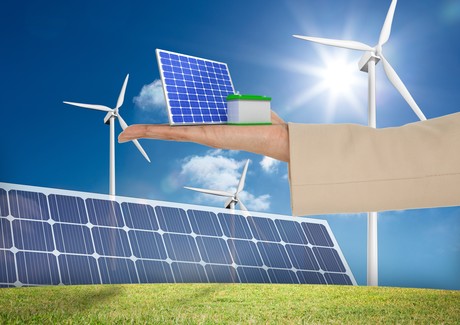Renewable energy — how many jobs are there in Aus?

The total number of people employed in the renewable energy industry has reached 10.3 million, according to the data released by the International Renewable Energy Agency (IRENA).
China, Brazil, the United States, India, Germany and Japan remain the world’s largest renewable energy employers, representing more than 70% of all industry jobs globally. Although growing numbers of countries are reaping the socioeconomic benefits of renewables, the bulk of manufacturing takes place in relatively few countries, and domestic markets vary enormously in size. Sixty per cent of all renewable energy jobs are in Asia.
So, where does Australia stand? According to the report, Australia added 1.3 GW of utility-scale solar PV capacity during 2017 — a record. “The country is likely to install more than 3.5 GW during 2018. It is estimated that this activity directly supported the employment of about 4400 people during 2017. Another 5500 people were directly employed in the design, sale and installation of rooftop solar systems. The wind power sector accounts for 11,200 jobs (Green Energy Markets, 2018), for a total of about 21,000. This uptick comes after a number of years during which Australia’s renewable energy employment had declined.”
Globally, the solar PV industry had another banner year, with record installations of 94 gigawatts (GW) during 2017, up from 73 GW in 2016, and significant new job creation, the report adds. “China, India, the United States and Japan were the most important markets, followed by Turkey, Germany, Australia and the Republic of Korea (IRENA, 2018b). Employment increased by 8.7% to approach 3.37 million jobs in 2017.”
“Renewable energy has become a pillar of low-carbon economic growth for governments all over the world, a fact reflected by the growing number of jobs created in the sector,” said Adnan Z Amin, Director-General of IRENA.
“The data also underscores an increasingly regionalised picture, highlighting that in countries where attractive policies exist, the economic, social and environmental benefits of renewable energy are most evident,” said Amin.
“Fundamentally, this data supports our analysis that decarbonisation of the global energy system can grow the global economy and create up to 28 million jobs in the sector by 2050.”
The solar PV industry remains the largest employer of all renewable energy technologies, accounting for close to 3.4 million jobs, up almost 9% from 2016 following a record 94 GW of installations in 2017. China was estimated to account for two-thirds of PV jobs — equivalent to 2.2 million — representing an expansion of 13% over the previous year.
Despite a slight dip in Japan and the United States, the two countries followed China as the largest markets for solar PV employment in the world. India and Bangladesh complete a top five that accounts for around 90% of global solar PV jobs.
Jobs in the wind industry contracted slightly last year to 1.15 million worldwide. While wind jobs are found in a relatively small number of countries, the degree of concentration is lower than in the solar PV sector.
China accounts for 44% of global wind employment, followed by Europe and North America with 30% and 10%, respectively. Half of the top 10 countries with the largest installed capacity of wind power in the world are European.
“The energy transformation is one of improving economic opportunity and a rise in social wellbeing as countries implement supportive policies and attractive regulatory frameworks to fuel industrial growth and sustainable job creation,” said Dr Rabia Ferroukhi, head of IRENA’s Policy Unit and Deputy Director of Knowledge, Policy and Finance.
“By providing policymakers with this level of detail about the composition of renewable energy employment and skills requirements, countries can make informed decisions on several important national objectives, from education and training, to industrial policies and labour market regulations,” continued Dr Ferroukhi. “Such considerations will support a fair and equitable transition to a renewables-based energy system.”
2025 saw record EV sales in Australia
More than 157,000 electric vehicles were sold in the nation last year, accounting for 13% of all...
2025–26 GenCost report released for public consultation
Solar PV and onshore wind still form the basis for Australia's cheapest electricity...
ARENA invests $21m in three EV charging projects
Funded under the Driving the Nation Program, the projects will focus on developing pathways and...



